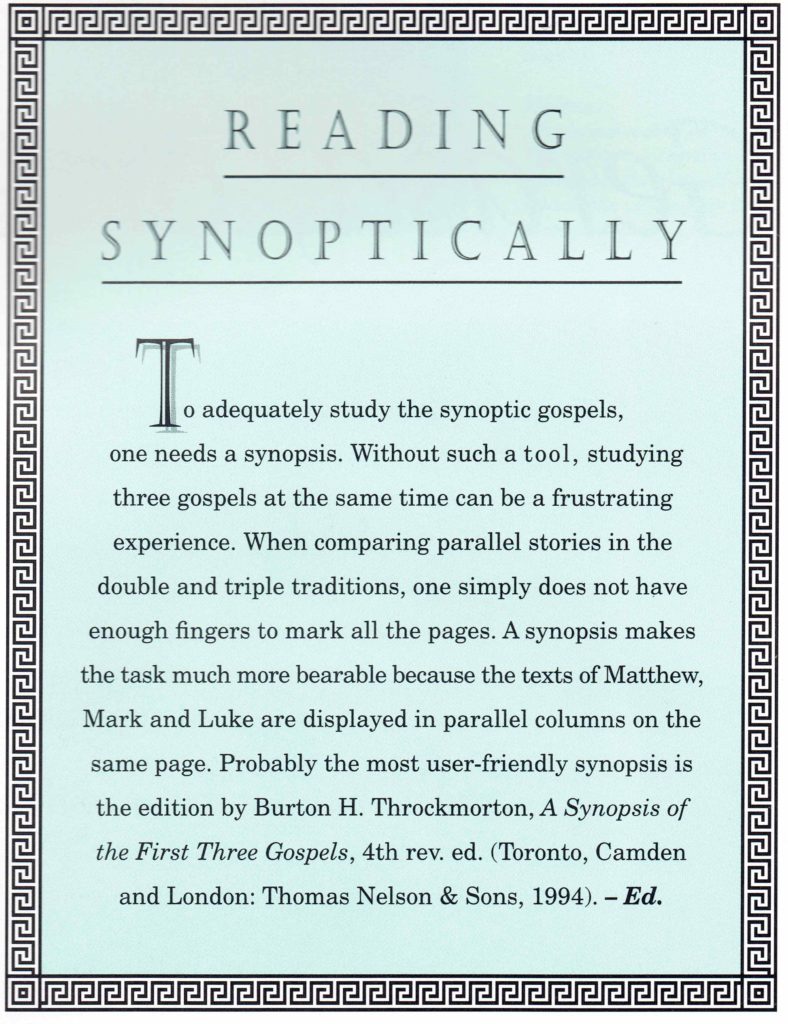Question that was published in the “Readers’ Perspective” column of Jerusalem Perspective 22 (Sept.-Oct. 1989): 2.
Why is your research focused on the Synoptic Gospels? Why leave out the Gospel of John?
—A reader in Rochester, New York, U.S.A.
The Synoptic Gospels (Matthew, Mark and Luke) are so similar in form and content that it is convenient to view them together. In modern times the three often have been printed in books with parallel columns to make it easier to compare their versions of the life of Jesus. Such a book is called a synopsis, from a Greek word meaning “seen together.”
Although the synoptic Gospels show signs of interdependence and share many parallel passages, the Gospel of John is unique in content and style. John’s account is perhaps the most beautiful and inspiring book in the New Testament, yet it is so different from the Synoptic Gospels that there is limited value in trying to view it “synoptically” with the first three Gospels.
Furthermore, one of the reasons for JP’s hypothesis that the first story of Jesus’ life was transmitted in Hebrew is the discovery that translating the Greek texts of the Synoptic Gospels into Hebrew usually provides significant insight into Jesus’ biography. The Gospel of John, however, does not translate easily to Hebrew and shows every sign of having been composed originally in Greek. For that reason, it often is omitted in discussions about the earliest form of the biography of Jesus.

































































































